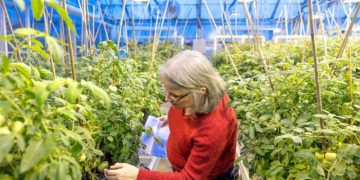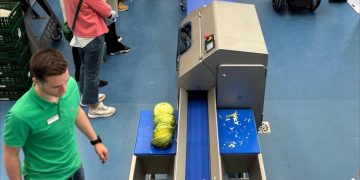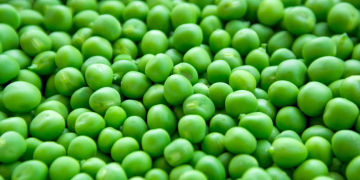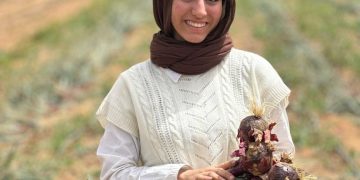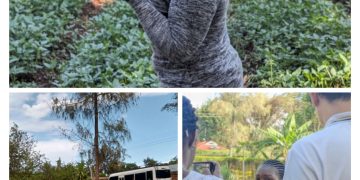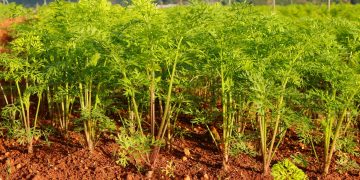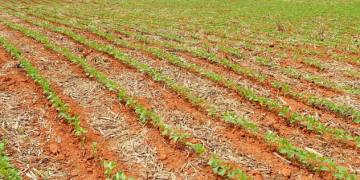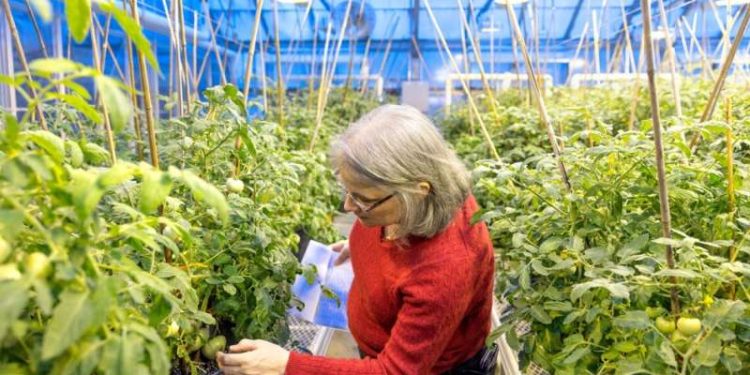Istraživač s Cornella dovršio je desetljećima dug program za razvoj novih sorti rajčica koje su prirodno otporne na štetočine i ograničavaju prijenos virusnih bolesti putem insekata.
Martha Mutschler-Chu, oplemenjivačica biljaka i genetičarka koja vodi program, nedavno je deponirala početni set istraživačkih linija rajčice otporne na insekte u sustav germplazme Ministarstva poljoprivrede SAD-a i Centar za genetiku rajčice na Sveučilištu Kalifornija-Davis, koji će biti dostupni svima za pristup biljkama radi istraživanja.
Ovog proljeća, Mutschler-Chu će dovršiti razvoj novog seta od 20 elitnih linija, koje će zatim biti dostupne svakoj zainteresiranoj sjemenarskoj tvrtki, koja može uzgajati svojstva otporna na štetočine u komercijalne sorte. Za uzgoj novih sorti sjemenarskim tvrtkama moglo bi trebati i do pet godina prije nego počnu prodavati nove sorte otporne na insekte.
Za uzgajivače, ove prednosti će ponuditi manje gubitka usjeva i oštećenja plodova, dok će također eliminirati ili smanjiti upotrebu pesticida i zaštititi okoliš.
Otpornost na štetočine kod ovih rajčica prilagođena je divljoj rajčici porijeklom iz Perua, Solanum pennellii. Andska rajčica ima male dlačice zvane trihomi koji izlučuju kapljice šećernih spojeva, zvanih acilšećeri, koji odbijaju insekte. Na taj način biljke sigurno i prirodno odvraćaju razne kukce, sprječavajući ih da se hrane, jedu lišće i prenose viruse ili polažu jaja, gdje bi ličinke mogle oštetiti biljke.
"Nove linije kombiniraju kvalitetnije biljke i plodove s visokim razinama acil-šećera, kombinaciju sjemenskih kompanija koje trebaju prenijeti svojstvo acil-šećera u komercijalne sorte", rekao je Mutschler-Chu, profesor emeritus u Školi integrativne znanosti o biljkama, Odjel za uzgoj biljaka i genetiku , dio Visoke poljoprivredne i biotehničke škole.
U terenskim i laboratorijskim ispitivanjima početnih linija istraživanja, znanstvenici za biljke s Cornella i sedam drugih sveučilišnih partnera (Državno sveučilište Sjeverne Karoline; Sveučilište Georgia, Sveučilište Clemson; Sveučilište Florida; Sveučilište Kalifornija, Davis; Sveučilište Kalifornija, Riverside; i Tehničko sveučilište Tennessee) otkrili su da prave razine i oblik acilšećera kontroliraju zapadni cvjetni trips koji širi pjegavo venuće virus, i bijele mušice slatkog krumpira, koje prenose virus žute kovrčavosti lišća. Kao rezultat toga, znatno je manje biljaka zaraženo ovim razornim bolestima i, u terenska ispitivanja, te su se infekcije dogodile kasno u sezoni.
"Za najbolju kontrolu virusa, predložio sam da proizvođači sjemena koriste dvoslojni pristup: stvaraju hibride sa svojstvom acilšećera i standardnim genima otpornosti na viruse", rekao je Mutschler-Chu. Ako kukci uspiju zaraziti biljku virusom unatoč acil šećerima, geni otporni na virus pružaju dodatnu zaštitu.
"To je sustav koji će zaštititi korisnost gena otpornosti na virus jer ako manje virusa uđe u biljku, vjerojatnost da će virus imati nasumične mutacije koja generira soj koji nadvlada otpornost također se smanjuje", rekao je Mutschler-Chu. Slično tome, budući da su acilšećeri neotrovni i ne ubijaju insekte, manji je selekcijski pritisak na same insekte da postanu tolerantni, pa se sporije prilagođavaju repelentu.
Nove elitne linije, koje će uskoro biti dostupne tvrtkama za proizvodnju sjemena, imaju uklonjenu većinu divljih gena iz S. pennellii koji potiču agronomski nepoželjne osobine iz njihovih genoma. Mutschler-Chu je zadržao ključne gene za acilšećer dok je uklonio mnoge druge divlje gene koji su uzrokovali negativne osobine kao što su višak grana, sitno voće i neugodan okus. Dok su početne istraživačke linije sadržavale oko 12% divlje DNK S. pennellii, najnovije linije pale su na otprilike 2.5% divlje DNK.
U širem smislu, rad praktično demonstrira proces za uključivanje vrijedne osobine, temeljen na sigurnom prirodnom spoju, kontroliranom brojnim genima, a koji je učinkovit protiv virusi i više štetnika, strategija koja bi također mogla koristiti drugim usjevima, rekao je Mutschler-Chu.
Iako će elitne linije biti puštene u prodaju neisključivo za bilo koju tvrtku sjemena za uzgoj svojstava u svoje komercijalne sorte, morat će podnijeti zahtjev za licencu Cornellovom centru za licenciranje tehnologije prije nego što mogu prodavati sjeme.
